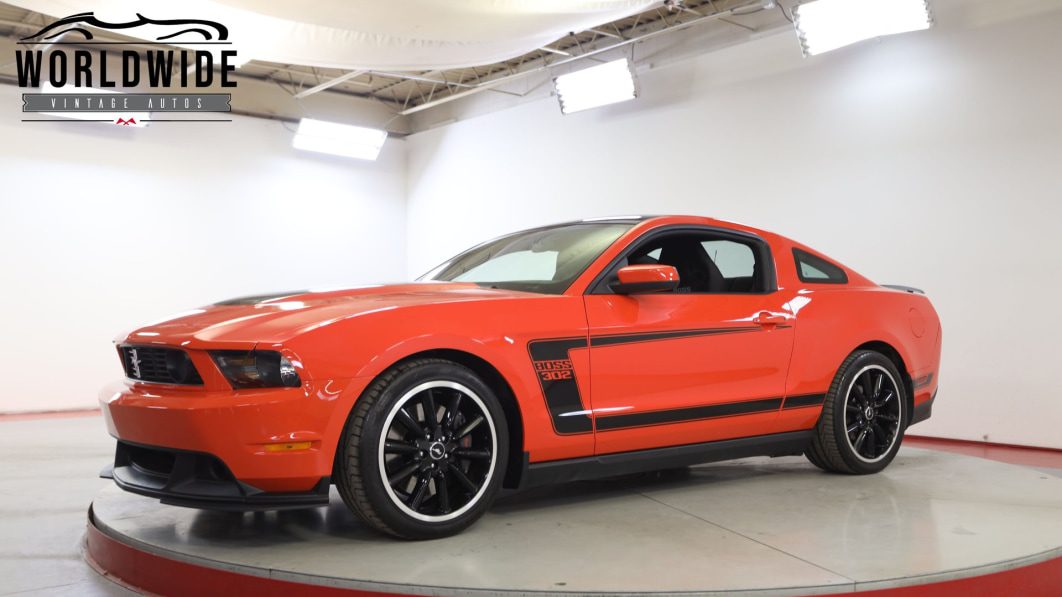2012 Ford Mustang Boss 302 with low miles, for a relatively low price

When Ford developed the original Boss 302 for the 1969 and 1970 model years, it needed to homologate a production car for the Mustang race car contesting the Trans-Am series, and it wanted to beat the Chevrolet Camaro Z/28. When Ford revived the Boss 302 name for 2012, there was no homologation component, and the benchmark was an international, not American, standard: The 2010 BMW M3. The result was a Mustang GT with an overhauled Coyote 5.0-liter V8, more horsepower, an adjustable suspension, side pipes, and acceleration times that put it within a whisper of the Shelby GT 500.
There were purely American aims as well. Back when Jim Farley was VP of global marketing and could say such things, he told an outlet, “From a business standpoint, the Boss 302 shouldn’t have happened. But it happened. My dream for the car was that it would make a lot of money for a guy street racing. It should be a car that winds up on YouTube doing something illegal. I’ve been waiting 20-plus years to launch a car like this.”
The Boss 302 reboot has sidestepped absurd valuations, and can be — relatively, for the times we’re in — purchased at what might be called a deal. Proving speculators among the mass market are nothing new, it’s not hard to find Boss 302s on the market with less than 5,000 miles, like this one. Living in Colorado while it looks for a new home, this barely-broken-in Competition Orange coupe has been run 4,704 miles. That’s barely enough to entirely use up the Pirelli P Zero tires the car sold with; this one still wears a set of P Zeroes, which the new owner will want to replace if they’re the originals based on age alone. Ford built just 4,000 examples over two model years, 750 of those being Laguna Seca Editions, so the conventional wisdom is that none of these will get cheaper.
To make the factory official street racer, engineers upgraded the Coyote 5.0 with gubbins like a forged rotating assembly, stronger CNC-ported heads, and race-spec bearings. Output climbed 32 ponies above the standard Mustang GT to 444 horsepower; torque dropped 10 twists to 380 pound-feet. The only transmission available was a six-speed manual going to 3.73:1 gears at the rear axle, where an LSD with carbon fiber did its best to make the solid rear axle better at direction changes. The motor breathed through a quad exhaust that put two of the tailpipes just ahead of the rear wheels. Handling improved with a chunkier rear stabilizer bar, stiffer springs and bushings, shocks that could be adjusted with a flathead screwdriver, and a more forgiving traction control system. A red TracKey, which this car comes with, unlocked more performance from the engine and more tolerance from the stability control system. The only option was a Torsen rear differential bundled with Recaro seats, which this car has.
The Boss 302 cost $40,995 new before the $1,995 Torsen/Recaro option — meaning this one is selling for well less than new after inflation.
If Grabber Blue with white stripes is more your style, here’s another that could be even more appealing: A Dallas, Texas, car on a set of Michelin Pilot Super Sports still showing ample tread, Recaros, even fewer miles at 4,665 on the odometer, and an asking price a grand less at $43,981. These days are a great time to be the boss, and maybe just as great to buy a Boss.
Related video:



